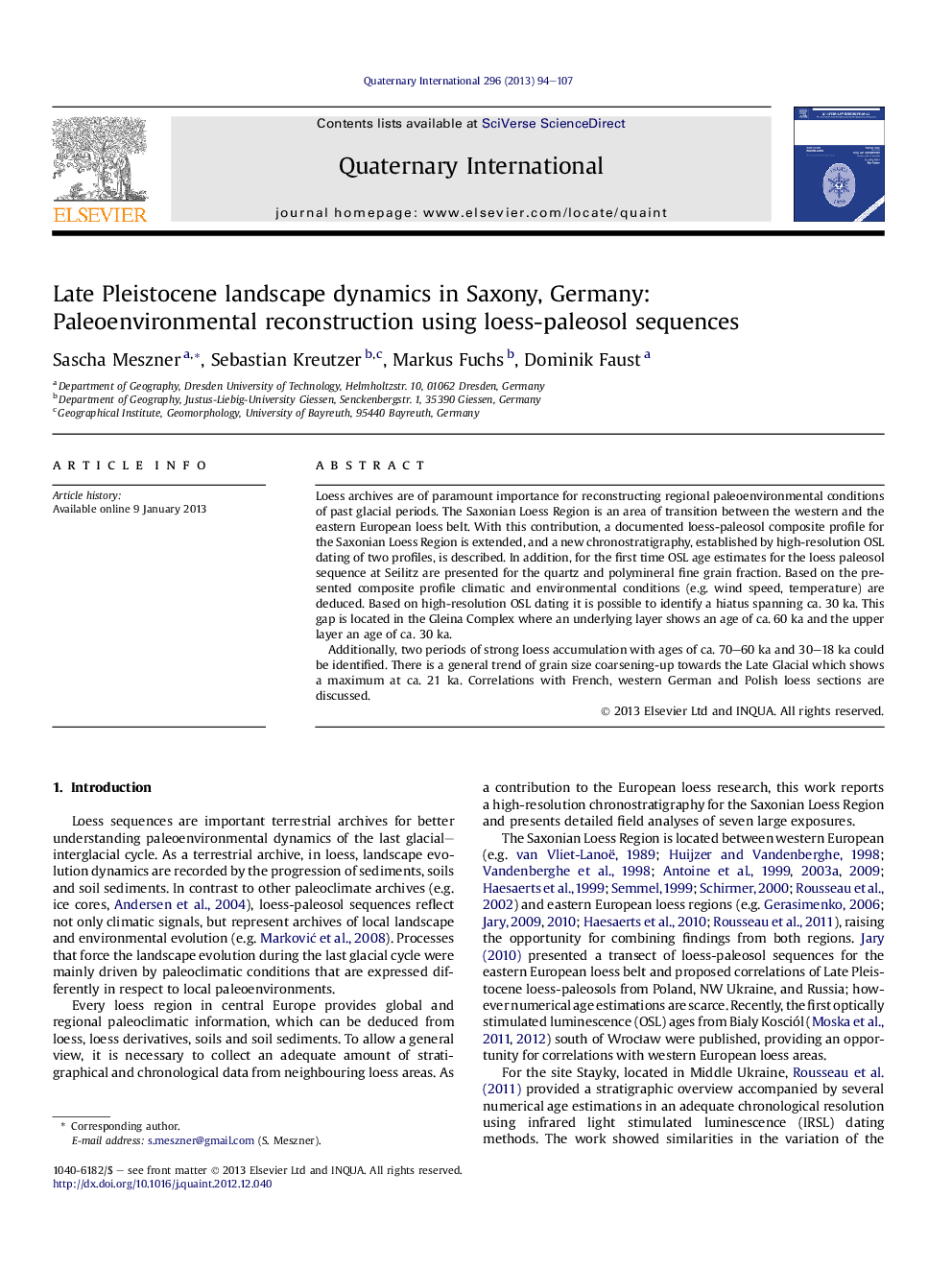| Article ID | Journal | Published Year | Pages | File Type |
|---|---|---|---|---|
| 1042215 | Quaternary International | 2013 | 14 Pages |
Loess archives are of paramount importance for reconstructing regional paleoenvironmental conditions of past glacial periods. The Saxonian Loess Region is an area of transition between the western and the eastern European loess belt. With this contribution, a documented loess-paleosol composite profile for the Saxonian Loess Region is extended, and a new chronostratigraphy, established by high-resolution OSL dating of two profiles, is described. In addition, for the first time OSL age estimates for the loess paleosol sequence at Seilitz are presented for the quartz and polymineral fine grain fraction. Based on the presented composite profile climatic and environmental conditions (e.g. wind speed, temperature) are deduced. Based on high-resolution OSL dating it is possible to identify a hiatus spanning ca. 30 ka. This gap is located in the Gleina Complex where an underlying layer shows an age of ca. 60 ka and the upper layer an age of ca. 30 ka.Additionally, two periods of strong loess accumulation with ages of ca. 70–60 ka and 30–18 ka could be identified. There is a general trend of grain size coarsening-up towards the Late Glacial which shows a maximum at ca. 21 ka. Correlations with French, western German and Polish loess sections are discussed.
